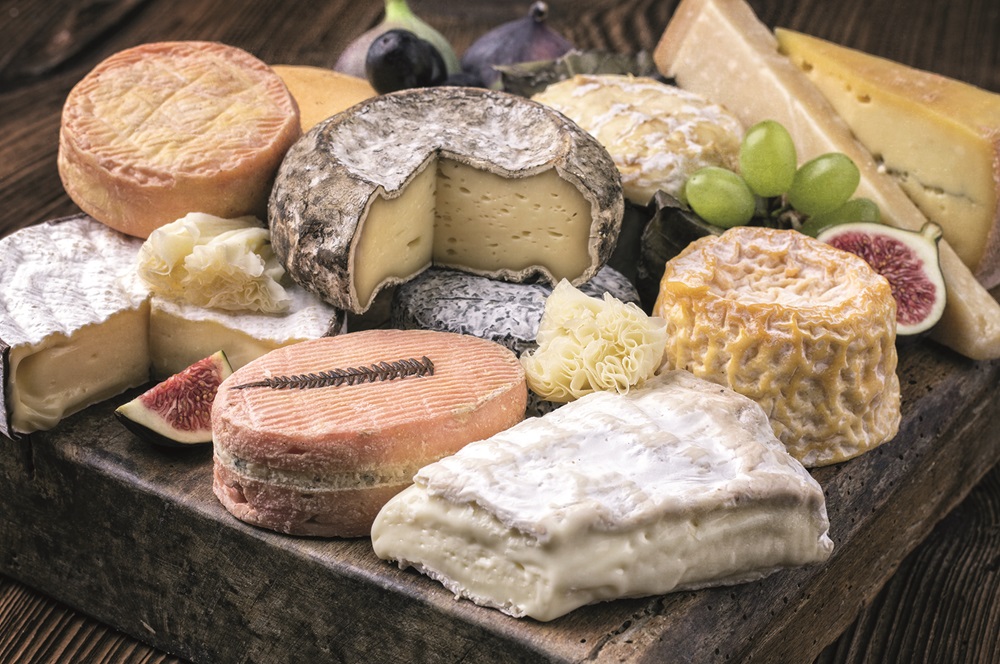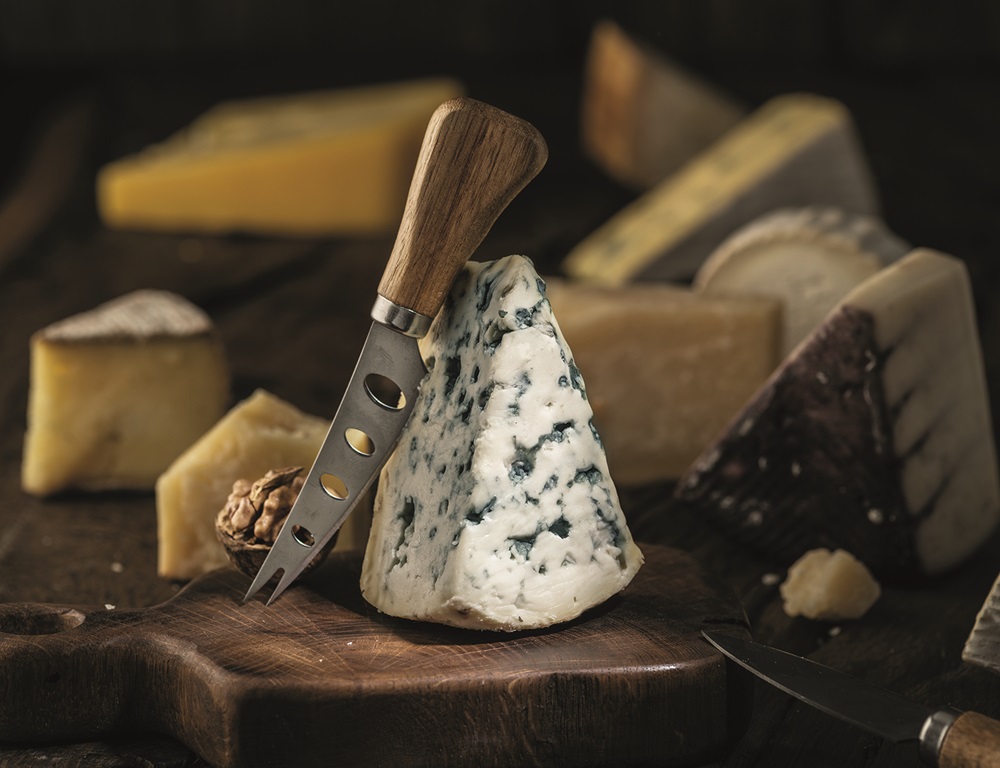
A bluffer’s guide to French cheese: Do’s and Don’ts
Le fromage forms a large part of the French culinary landscape, and the delicate process of enjoying it is not to be taken lightly! Amy McPherson has a quick guide to help you navigate cheese etiquette…
BUYING THE CHEESE
• A serious cheese lover will never buy packaged cheese from supermarkets. Purchase from a fromagerie, or even better, a fromagerie that is also an affineur, the people who age and refine the cheese as a final product – this is a guarantee of quality and taste.
• The aroma is a source of pride in certain French cheeses so it is not considered polite to mention the stink of the cheese, especially in a fromagerie. If you really must comment, you can say the cheese is ‘fort’, which means ‘strong’ in French.

SERVING THE CHEESE
• Cheese is its own course, served after the main meal and before dessert. This is associated with a history of cheese being considered an aid to digestion, to ‘close the stomach’ after a meal.
• Traditionally, you should never serve just one type of cheese. The selection of cheese should be offered in odd numbers, but should generally not outnumber the number of guests being served.
• Present cheese in the order that it should be eaten, from the mildest to the strongest.
• Never pre-cut the cheese to serve. This will dry and alter the optimum texture and compromise the flavour of the cheese.
CUTTING THE CHEESE
• As cheese will not be served pre-cut, it is important to know how to cut it at the table.
• Cut it according to the softness and the shape of the cheese. Softer cheeses are cut in wedges so that each portion has a bit of the delicious centre and a bit of the outer rind. It is important not to take more than your share of the creamy centre. The cutting rules for hard cheeses are a bit more relaxed.
• Don’t cross-contaminate cheese with the same knife, especially if a selection of soft and hard cheeses are presented. Use a knife for each cheese, or clean it between cuttings.

EATING THE CHEESE
• The cheese should have been served in the order of how you should eat it. If you have cut your own selection, eat the cheese with the mildest (usually also the softest, with the exception of sheep’s and goat’s cheese) flavour and eventually work your way to the cheese with the strongest flavour (which is more often than not a blue variety).
• The rind is (usually) edible. In general, rind is eaten with all soft cheeses and is not eaten from hard cheeses, as these ones may contain wax in them.
• Eating the cheese is considered an experience to savour. A French person will eat it slowly and gently to allow the flavour to sink into their culinary senses. After all, cheese is to be enjoyed, not endured!
COMPLEMENTING THE CHEESE
• Le fromage is almost always paired with red wine (though blue cheeses go well with sweet wines such as Monbazillac and Sauternes). Choose a wine from the same region as the cheese to really impress.
• Depending on the strength of the cheese eaten, you might want to consider serving lighter bodied wines so as not to mask the flavour of the cheese. The wine should compliment the cheese, not overpower it.
• Milder cheese could also be paired with dry white wines (never sweet).
• Serving crackers as a vessel for consuming cheese is less frowned upon these days but usually you will be given bread – but remember, the pieces eaten should not be larger than the pieces of cheese. For the French, cheese is the celebrity and the bread just a side act!
QU’EST-CE QUE C’EST COMME FROMAGE? (A little cheese(y) vocabulary)
Lait de vache / chèvre / brebis = cow’s/goat’s/sheep’s milk
Fromage frais fresh cheese that’s not been aged for more than a few weeks
Fromage à pâte molle soft cheese
Fromage à pâte dure = hard cheese
Fromage à pâte semi-dure = semi-hard cheese
Fromage à pâte persillée blue cheese
Fromage à pâte fondue = processed cheese
Fromage au lait cru = unpasteurised cheese
Read More: A Complete Guide to French Cheeses
Wanting to know more about French fromage?
Mark your calendars for a tasteful discussion with Ned Palmer, author of A Cheesemonger’s Tour de France, as he delves into the world of traditional French cheese and the significance of AOC (Appellation d’Origine Contrôlée). Discover how AOC protects the authenticity and heritage of their production, ensuring it follows traditional methods linked to specific regions.
Claim your free 30-day trial to France Today Membership here.
This talk will not only enhance your next visit to your favourite fromager, but also provide a new appreciation for the unique craftsmanship behind each variety.
Latest Posts:
- Canard au sang
- Oeufs en meurette
- Le Goûter: The Sweetest Part of the Day
- Fabien Ferré: Jumping from 0 to 3 Michelin Stars
- Sardines and onions summer tart
Lead photo credit : cheese plate, © Shutterstock
Share to: Facebook Twitter LinkedIn Email
More in French cheese



